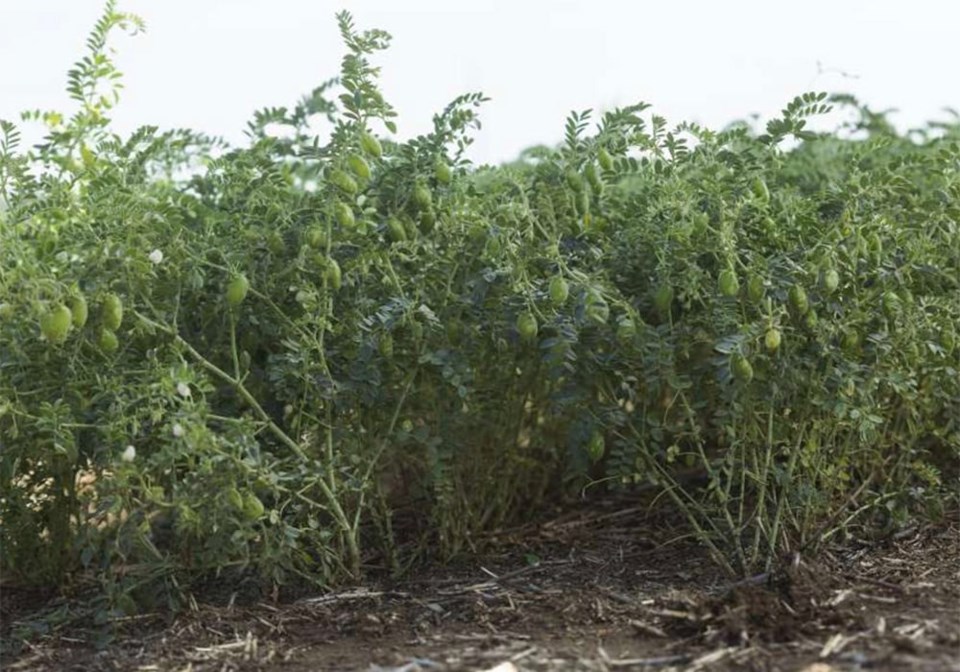WESTERN PRODUCER — Large calibre kabuli chickpeas are in short supply.
“There are reports that this year’s harvest in Canada was dominated by small calibre product,” Stat Publishing editor Brian Clancey wrote in a recent article.
“Limited supplies of eight millimetre or larger chickpeas is supporting bids for those sizes, while discounts for seven mm and smaller sizes are widening.”
It is the same situation in other key exporting regions of the world.
Fethi Sonmez, chief executive officer of Armada Foods, recently told the Global Pulse Confederation (GPC) that he thinks Turkey produced 220,000 tonnes of the crop this year.
That is well below the early season estimates of 245,000 to 325,000 tonnes. Yields were 15 to 20 percent lower than the five-year average.
“On quality, we have much fewer nine mm calibre chickpeas this year,” he said in a GPC article published Oct. 3.
The nine mm size typically make up 20 percent of Turkey’s kabuli crop. This year it is in the six to eight percent range. The remainder is eight mm or smaller.
That is why the price of nine mm chickpeas have increased by US$200 per tonne in Turkey.
There is virtually no carry-in from the previous year, which is why Turkey has been importing kabulis.
Imports for the first seven months of 2023 have been 78,000 tonnes, more than triple the previous three-year average of 22,367 tonnes for that period, according to GPC’s Pulse Atlas data.
Most of those imports occurred during a zero-duty period during the first six months of the calendar year. The duty increased to 19.3 percent in July, which will put the brakes on imports.
Sonmez expects Turkey to export 100,000 tonnes of kabulis, including 40,000 tonnes of its domestically produced crop. There is strong demand from China, Pakistan, Italy and India.
Farmers in the United States also produced more small calibre chickpeas than usual this year.
Planting for smalls jumped 35 percent to 107,200 acres, while seeding of large calibre only increased by two percent to 269,600 acres.
Clancey expects reduced U.S. demand for chickpeas due to a larger crop in that country. Imports are expected to fall to 67,000 tonnes in 2023-24 from 94,600 tonnes last year.
He anticipates Canada will face fierce competition from Mexico in that market.
However, Canada will have vastly reduced supplies of the crop to export due to a “massive drop” in carry-in stocks. Stat expects supplies to plunge 39 percent to 200,400 tonnes.
“Supplies at that level will force Canada to significantly reduce exports from last season’s 230,300 tonnes, to a projected 105,200,” Clancey said in a Sept. 14 article.
Marlene Boersch, managing partner of Mercantile Consulting Venture, said the price spread between large and small calibre product is wide.
“I would think that we’re already at the higher end of historic price patterns,” she said.
Clancey said exporters are keenly watching seeding progress in India to help determine future price direction.
“There is a certain level of pessimism in India about its rabi season crop prospects because of below average monsoon progress in parts of the country and reduced water levels in reservoirs, which would affect supplies available for irrigation,” he said.
The other key export market for large kabulis is Mexico, where production is expected to “rise substantially” in 2024.
Prices have shown little reaction to that news as the market awaits further news on India’s crop, said Clancey.
Meanwhile, kabuli chickpea production in Russia continues to expand like gangbusters.
Tareq Awad, senior trader with Fruitimpex Food Export & Import, told GPC that Russia harvested at least 500,000 tonnes of the crop. That is up from 420,000 tonnes last year and double the volume of three years ago.
“In four years if not sooner, I see us hitting the one million mark,” Awad told GPC in a recent article published on its website.
Boersch said that is not good news for Canadian farmers given Russia’s proximity to key markets such as India, Pakistan and Bangladesh.
“It’s a huge threat,” she said.
However, she noted that Russia’s quality is questionable. The country grows small calibre kabulis, with 90 percent of production in the six to seven mm range.
Awad expects Russia to export 90 percent of its production this year. Pakistan and Turkey are its top two customers. The busiest months for shipping product are October, November and December.
The export price for Russia’s six to seven mm product is about US$750 per tonne for bulk shipments.
“Presently we are seeing a historically large price gap between the small calibre chickpeas and the large calibre chickpeas,” Awad told GPC.
He noted that 12 mm chickpeas from Mexico and India are selling for $2,000 per tonne compared to $1,600 to $1,700 last year.
Contact [email protected]
Bookmark SASKTODAY.ca, Saskatchewan's home page, at this link.

